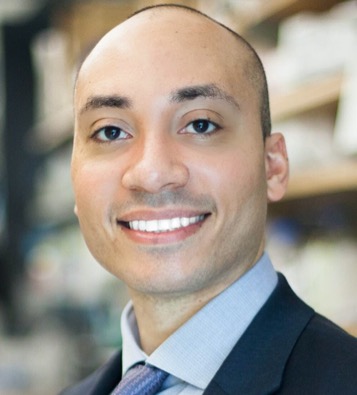CRS Scientist Spotlight on Dr. Evan Scott
Don’t take criticism personally, and instead use critiques from colleagues to improve your experimental design and both your written and oral communication skills.
Dr. Evan Scott, PhD

What is your current position?
Kay Davis Professor of Biomedical Engineering & Microbiology Immunology
Could you describe your research?
My lab designs, engineers and scalably fabricates drug delivery systems for immunotherapy, cell therapy and vaccination. We primarily focus on targeted delivery of therapeutics to cells of the immune system and lymphatic endothelium using nanoscale drug vehicles. These vehicles are composed of synthetic polymers that we engineer to self-assemble into a variety of shapes, sizes and structures that mimic viruses. Biomimicry of viral structure and function is a key part of our delivery strategies, which enhances our ability to target specific cells and tissues. With regard to the objectives of CRS, we are very interested in understanding how drug delivery and inflammation differ as a function of age and sex in order to tailor personalized immunotherapies for patients. Our interest in modulating inflammation has also led to a new focus of our group on endometriosis, where we are developing anti-inflammatory nanoparticles to specifically target immune cells contributing to the pathology.
What aspect(s) of CRS do you find most valuable or look forward to engaging in?
The ability to work with such talented colleagues is definitely the most valuable aspect of the CRS. Through such interactions, we are able to develop new projects, brainstorm unique ideas and solutions as well as have access to unique disease and animal models.
What has been the most valuable aspect to your training as a scientist?
The most valuable aspect of my specific training stems from the multi-disciplinary nature of my field, Biomedical Engineering. As a Biomedical Engineer, I developed expertise in multiple fields, including chemical engineering, immunology, biomaterials science, polymer chemistry, cell biology, and surface science. My training in these diverse areas often allows me to make unique connections between fields as well as to take techniques from one field and apply them in novel ways within another discipline.
What would you recommend to junior scientists in order for them succeed in their scientific careers?
Most importantly, learn to “fail up”. Most experiments as well as most grant applications will not be successful. But this failure always leads to learning opportunities for steadily improving your research as well as for personal improvement. Always try to design experiments such that something can be learned whether your experiments fail or succeed. Don’t take criticism personally, and instead use critiques from colleagues to improve your experimental design and both your written and oral communication skills.
What do you think will be the next big contribution in your field?
The next big contribution in the field of drug delivery will likely be related to personalized medicine. Currently, dosage is the main variable that is adjusted during drug administration in response to a patient’s age, body weight etc. But it is apparent that many different and highly individual patient characteristics can drastically change the biodistribution and efficacy of drugs, including sex, disease state and prior exposure to vaccination and infectious pathogens. A great deal of focus is now being placed on how the structure and chemistry of drug delivery vehicles can be customized for a patient’s specific biochemistry and disease state. I anticipate major advances in my field will result from these efforts in coming years, particularly for vaccine design.
What hobbies do you have outside of the lab?
In terms of hobbies, I’m a big movie buff and like to stay active (mainly cycling, weight lifting and calisthenics). Outside of the lab, I spend most of my time with my wife and 2-year-old daughter, the latter of which keeps us both extremely busy!